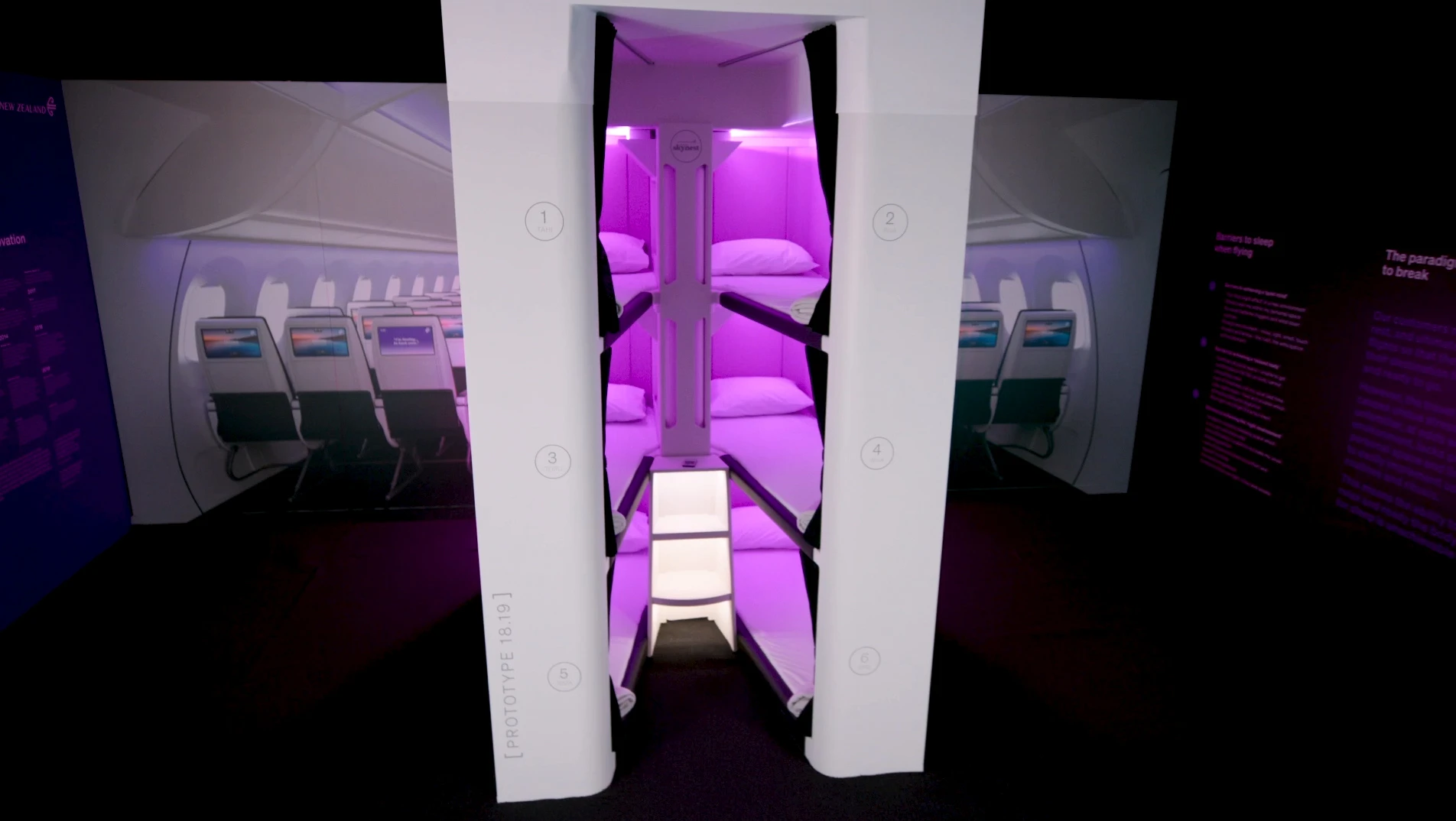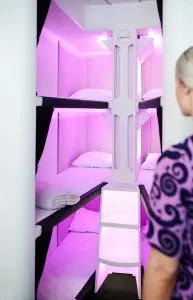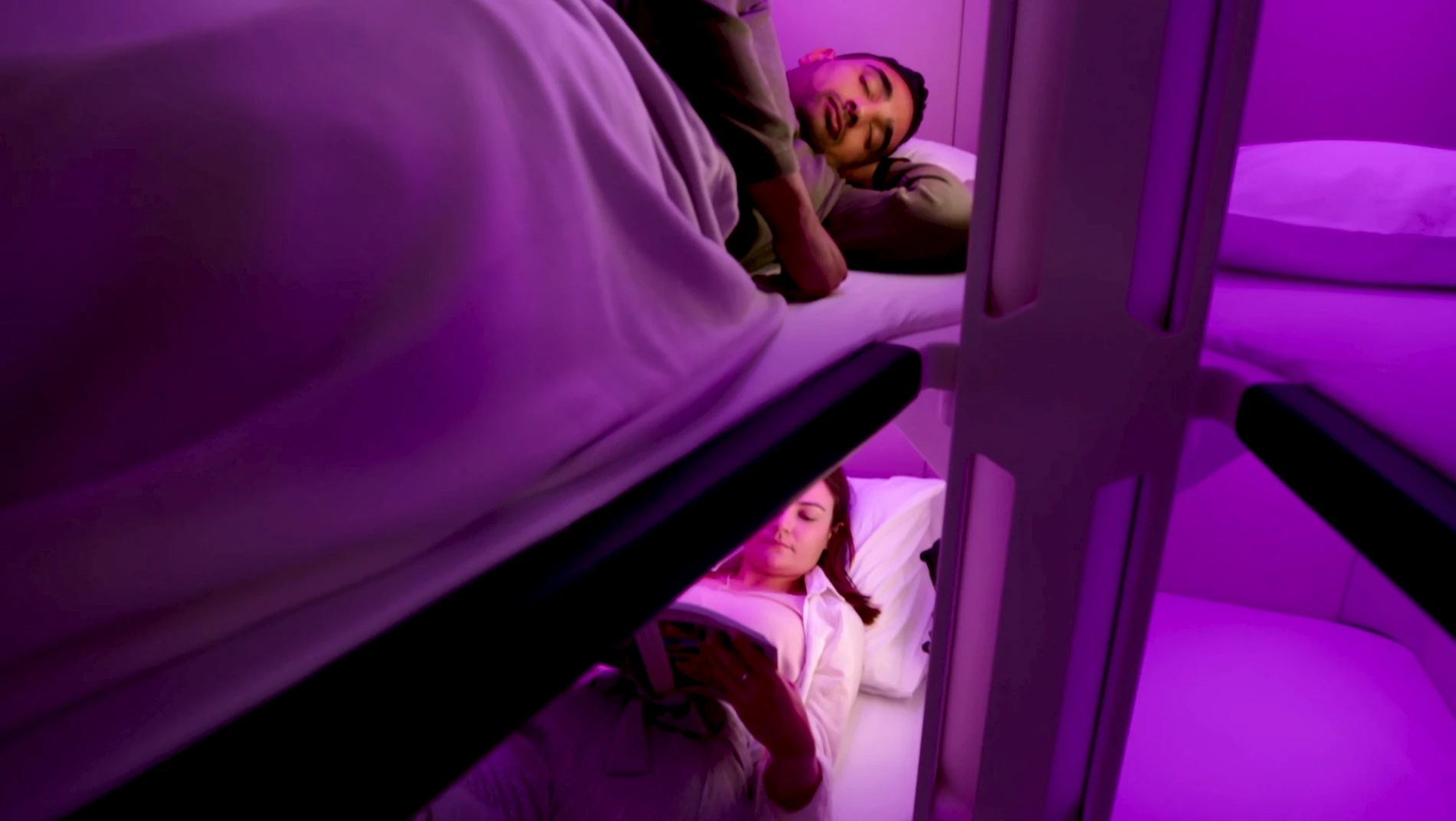Why have we all come to accept air travel in the economy class as a feat of personal strength? A designed space that’s inherently flawed but character-building—our own personal set of Survivor?
Air New Zealand is trying to put the whole “economy class is the third circle of hell” label to bed with new patent and trademark applications for what it’s calling the “Economy Skynest”: a small cabin nested within the economy class that has six “sleeping pods” with full-length beds so passengers can lie down flat on long flights.

Depending on whether you’re a glass half-full or half-empty kind of person, the setup of the sleep pods either resembles the sleeping accommodations you might find in a hostel, or they may look like a human shelving unit. Either way, they’re about as private a setting as you can get in economy. In addition to typical bedding supplies like a full-size pillow, sheets, and blanket, it also includes ear plugs, dim lighting, and a privacy curtain. That crying baby was never there. Economy fliers can book one of these “sleep pods” at an additional, to-be-determined fee (the airline is still assessing the product’s commercial viability, a spokesperson told me).
[Image: courtesy Air New Zealand]
Of course, other airlines already have sleeper beds. The difference is that they’re in first class. For instance, Tuck, a company that produces sleep guides and bed and mattress reviews, made a list of best airlines for sleeping, writing, “Shell out thousands of dollars for a first or business class suite, and you can sleep like a baby.” The best way to get to sleep in coach is a stark contrast, according to the list: Assess “seat pitch,” the space between rows, to get the best legroom. Economy class never has anything nice!

But this new long-haul flight isn’t a one-off. It’s also indicative of where the airline industry is going. According to Forbes, improved fuel efficiency has increased the number of ultra-long flights year-over-year, with new flight routes that range between 17 and 19 hours. Qantas began testing 19-hour flight routes between Sydney and New York or London last year.

A final decision to run the sleeping pods will be made next year after the first Auckland-New York flights are conducted.
Recognize your brand’s excellence by applying to this year’s Brands That Matter Awards before the early-rate deadline, May 3.